Light wind Wingsurfing - AK Durable Supply Co, Nomad 95L Review.
- Posted on
- By Ryan "Rygo" Goloversic
- 0
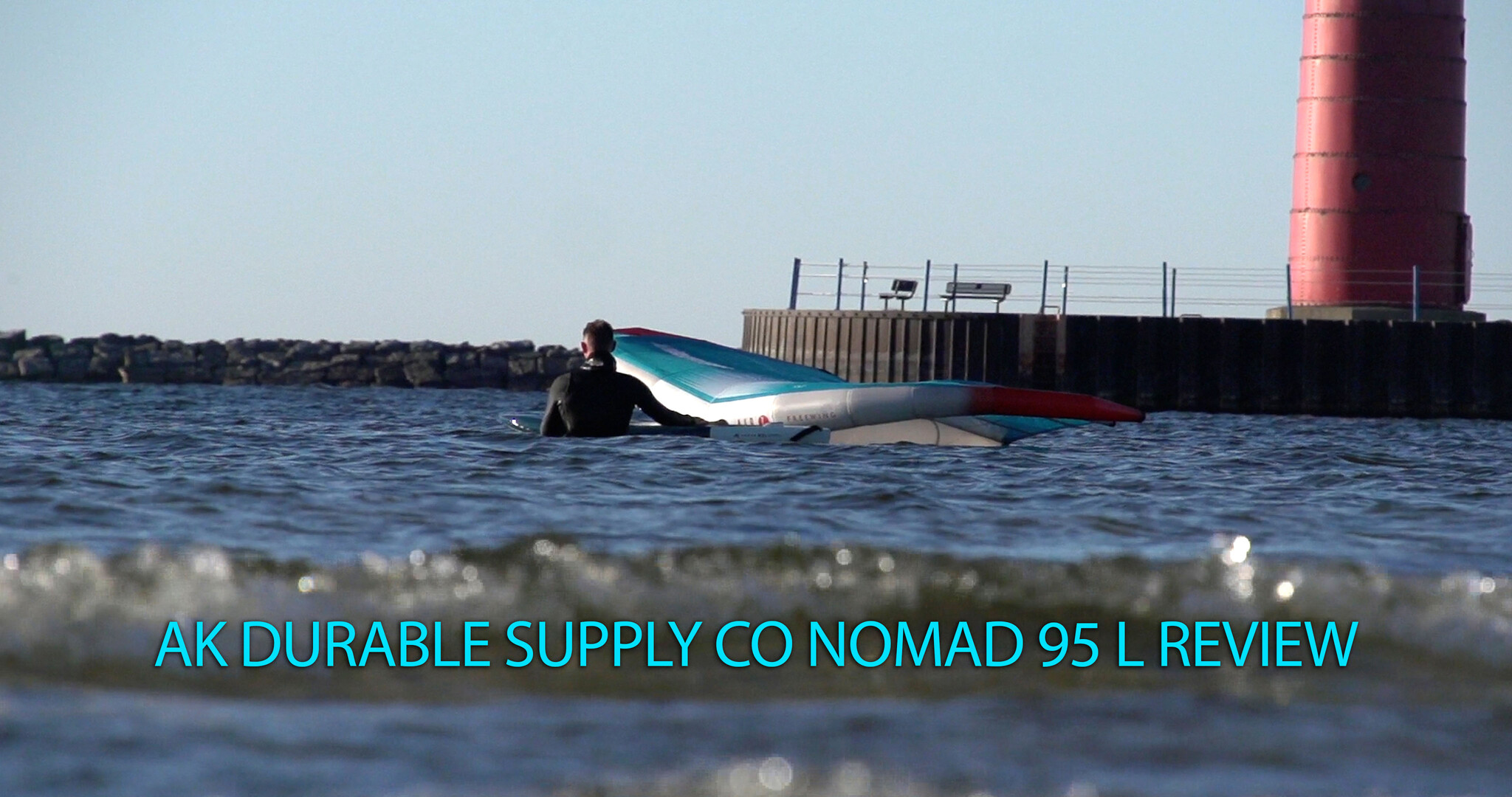
A detailed review of the Ak Durable Supply Co. Nomad 95 L
Effortless Light Wind Wing Foiling
Recently, I had the opportunity to test the 95L AK Nomad in light wind conditions—the wind was gusting between 9 to 11 knots, with a large wind shadow from the jetty upwind and inconsistent gusts. I was using the 95-liter Ak Nomad with an 85cm carbon mast, the 2050 Plasma front foil, a 180 Rhythm rear wing, and a 7m FreeWing Air V5 Lightwind wing. This board turned what could have been a frustrating session into a revelation. Here’s how the Ak Durable Supply Co. Nomad 95 L performed in these tough conditions.

First Impressions: A lightwing wingboard with Fast Acceleration in Minimal Wind
Can you wing foil in 10 knots? After a few minutes with the AK Nomad, it became clear that this board excels in low wind. With gusts barely pushing 9 knots, I found myself holding the wing in the water, waiting for a breeze. But what really impressed me was how fast the Nomad picked up speed with even the smallest puff of wind. With just a few pumps, the board would accelerate, faster than anything I’ve tried to date.
Whether I was simply paddling or pumping the wing in my hands, the Nomad would quickly gain momentum, showcasing its highly efficient hull design. The way the hull cuts through the water and reduces drag is a game-changer for light wind sessions. Yes you can absolutely foil in sub 10 knots with this wingboard.
Effortless Speed and Stability
What makes this setup so impressive is how easy it was to get the board up on foil. Despite the light wind, the 2050 Plasma front wing worked perfectly with the board to take flight with minimal effort. The 2050 Plasma’s wing span is massive and it wants to take flight with very little rider response. Paired with the Nomads speed, I was able to get the board off the surface of the water quickly. With there being no drag from the board, I was able to pump the wing and take flight effortlessly. The key is a board that can break the surface tension of the water and get you to foiling speed fast.
Once the board left the water, even a few small pumps on the wing allowed me to maintain speed in the lulls, and the foil lifted controlled and smoothly. Wingsurfing in these conditions feels surreal—you strangely feel lit up when there is a random gust to 12 knots. A hydrofoil wing like this has wide arching turns with the massive wingspan beneath your feet. Despite the gusty, inconsistent wind, I always felt powered and stable, which is a huge win in these kinds of conditions.
At 175 pounds, the 95L Nomad felt perfectly stable. Its 23-inch width provided stability but didn’t feel like a big board. I was skeptical of this size at first but it’s a real gem striking a good balance of play and ease of use. At 175 pounds I could easily stand, wait for gusts, and get up to speed without constantly worrying about falling. Pairing this with a large high aspect wing does provide the benefit of lateral stability when water starting. I loved padding out on a narrower board and sitting on it like a surfboard was a pleasure with this shape. I was surprised how much faster I could paddle compared to other wingboards too.
Hull Shape and Hydrodynamics: Key Features
How do chine rails affect performance in wing foiling? The hydrodynamics of the Ak Nomad are what set it apart from other boards in its class. The hull’s unique shape, particularly the sharp rails, helps release water cleanly, allowing the board to pick up speed instantly with minimal drag. The rocker is focused in the front half, keeping the nose elevated even in choppy waters, while the flat rear section aids in maintaining speed and stability. These features help the Nomad pick up speed effortlessly, especially in light winds, where every ounce of efficiency matters.
The concave deck adds a feeling of connection, making it easier to pump and control the board. The thin deck pad with its corduroy texture offers great lateral grip, improving confidence and control during transitions and while pumping. Even in low wind, the board felt responsive and connected to my movements. There were times when I had to pump to keep up speed and I appreciated the direct feel from the carbon mast and the board. There is a layer of active carbon in the top of the deck that helps you transfer energy but also gives you feedback from the foil.
A fast wingboard means you’ll get off the water sooner
How to choose the right wing board for light wind? In light wind conditions, choosing the right board is crucial for a good session. The AK Nomad’s combination of volume, width, and rocker makes it an ideal choice for those days when the wind barely shows up. As I pumped the wing in my hands, I was surprised at how quickly the board responded. The Nomad’s ability to accelerate and take off in minimal wind comes down to its superior hydrodynamic design and lightweight carbon construction.
Once the board left the surface of the water, the foil took over, and I was able to ride easily even though the wind barely registered. This session was one of the easiest and most enjoyable I've had, even though the wind conditions were far from perfect. The Nomad felt maneuverable and responsive when I had to pump a little extra energy into my foil to keep riding when the wind randomly shut off with the holes in the wind.
Board Construction and Material: Stiffness and Durability
One of the standout features of the Nomad is its carbon construction, which means response, stiffness, and durability. What is the best material for wing foil boards? In the case of the Nomad, active carbon provides the stiffness needed to transfer power efficiently from the rider to the foil. Even in light wind, the board felt responsive, and I could feel every movement through the foil, which made for a highly connected and intuitive feeling ride in conditions that would normally be frustrating.
Additionally, the construction provides durability—perfect for riders who want to invest in a board that will last. The nose design features a dome shape and helicopter tape for extra protection, especially when placed on rough surfaces like sand or gravel.
Stability and User-Friendly Design
What size wing board should I use for light wind wing foiling? At 95L, this board is an ideal option for average weight riders who want a stable platform without the bulk of larger, heavier boards. I would recommend this to anyone from 100 pounds to 190 depending on your skill level. If you’re over 200 pounds, you might consider the 115 or 130 L. On the 95 L The 23-inch width added stability, making it easier to wait for gusts, stand up, and get going without worrying about balance. I never felt overly challenged by the board’s size, even when the wind dropped.
The concave deck helped with balance as well, keeping my feet securely planted and making it easier to control the board during transitions or pumping.
Nose and Rocker Design: Smooth Ride in Light Wind
The Nomad’s rocker, concentrated in the front half of the board, is essential for maintaining speed and balance in light wind. The elevated nose helped me navigate through small chop without losing momentum, while the flat rear section kept me stable and moving when I needed it. These features are crucial for light wind wing foiling, where every bit of speed and balance matters.
Larger Wings in Light Wind
What’s a good wing size for light wind wing foiling? For this session, I used a 7m Freewing Air V5 Lightwind wing, which worked perfectly given the conditions. While managing a large wing can be tricky, especially with the Nomad’s longer nose, I found the setup to be effective for light wind. A few times, the wing got stuck under the nose during lulls, but that’s a small price to pay for the power it delivered. Funny enough, this only happened because the board was faster than I expected. If you’re winging in low wind, a larger wing like this is essential for generating enough speed to foil. Once I got in tune the speed of the board I was cognizant of my wings position and this became less of an issue.
Perfect Light Wind Foiling Board
What’s the best board for light wind wing foiling? The AK Nomad 95L is an exceptional choice for light wind wing foiling. Its combination of stability, speed, and responsive construction made for an effortless and enjoyable session, even in less-than-ideal conditions. Whether you're an experienced rider looking for a light wind-specific board or a beginner transitioning from SUP or windsurfing, the Nomad is a great fit.
Its hydrodynamic hull shape, combined with carbon construction, mean that the board is stiff, responsive, and easy to pump. The Nomad makes light wind winging not just possible, but exciting and fun. This is a board that will keep you on the water even when the wind isn’t cooperating, and for that, it’s definitely worth the investment.
If you have any questions about light wind wingsurfing or the AK Nomad email or call us at Epic Board Sports in Cocoa Beach Florida.

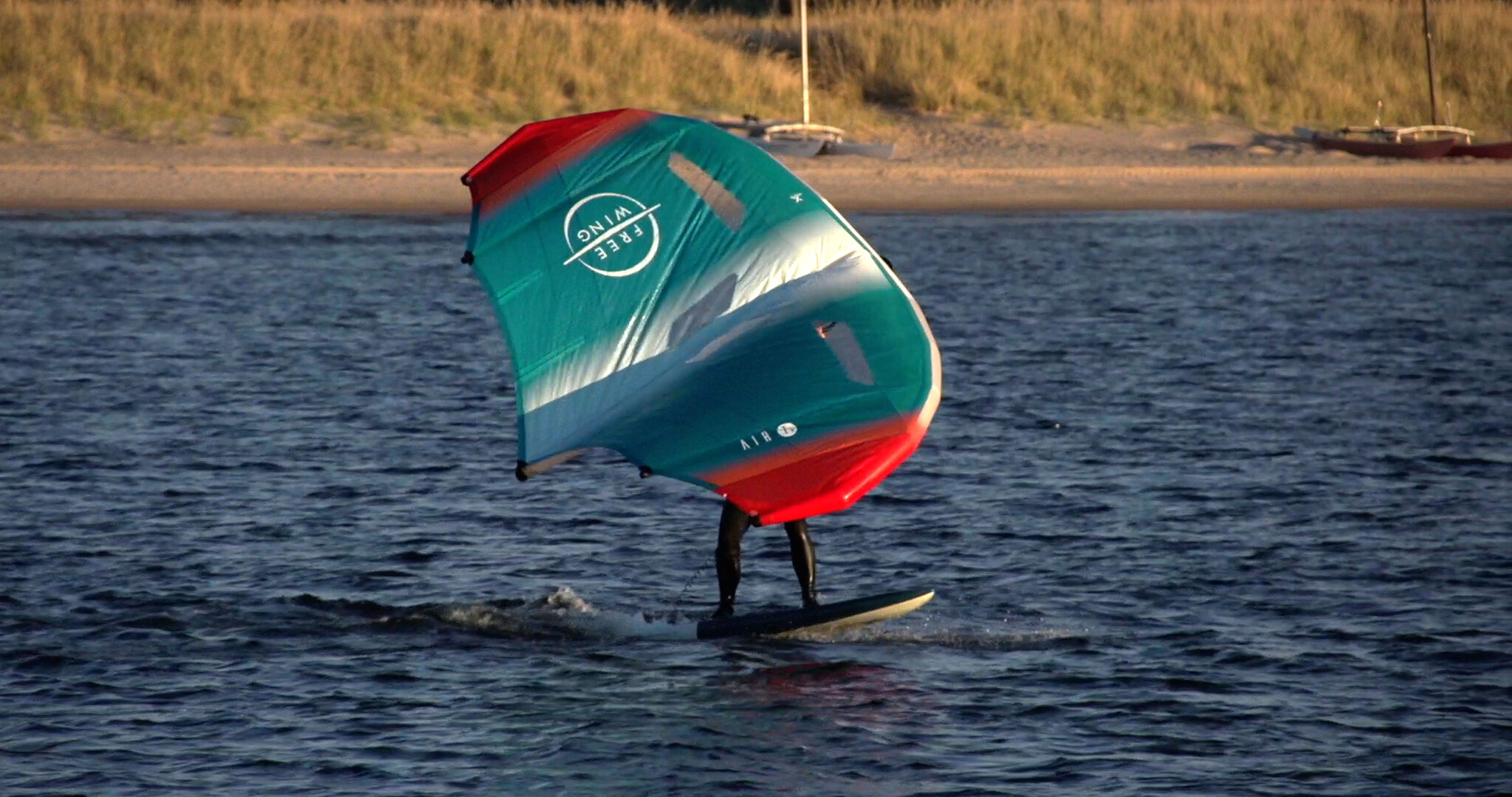

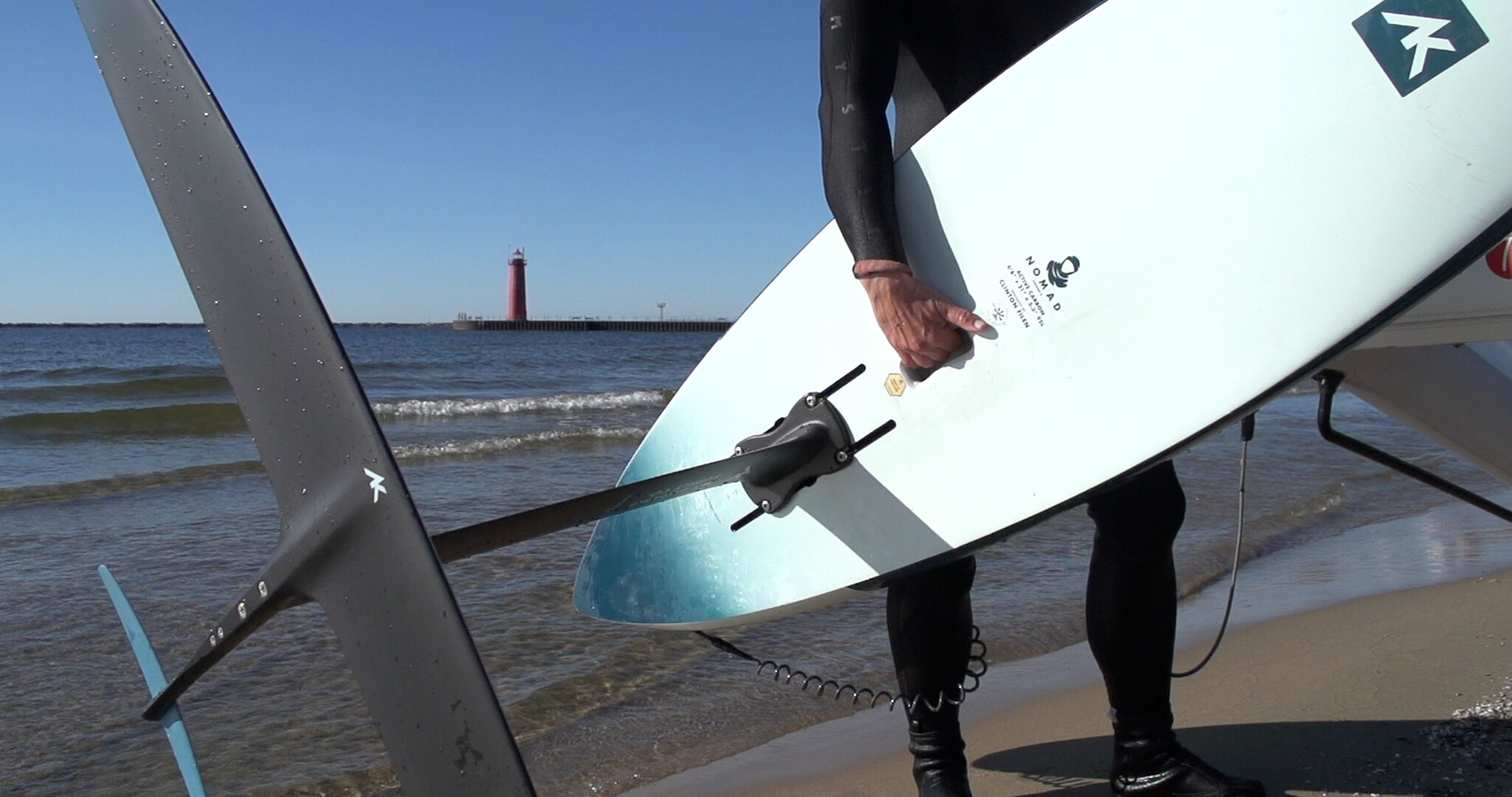
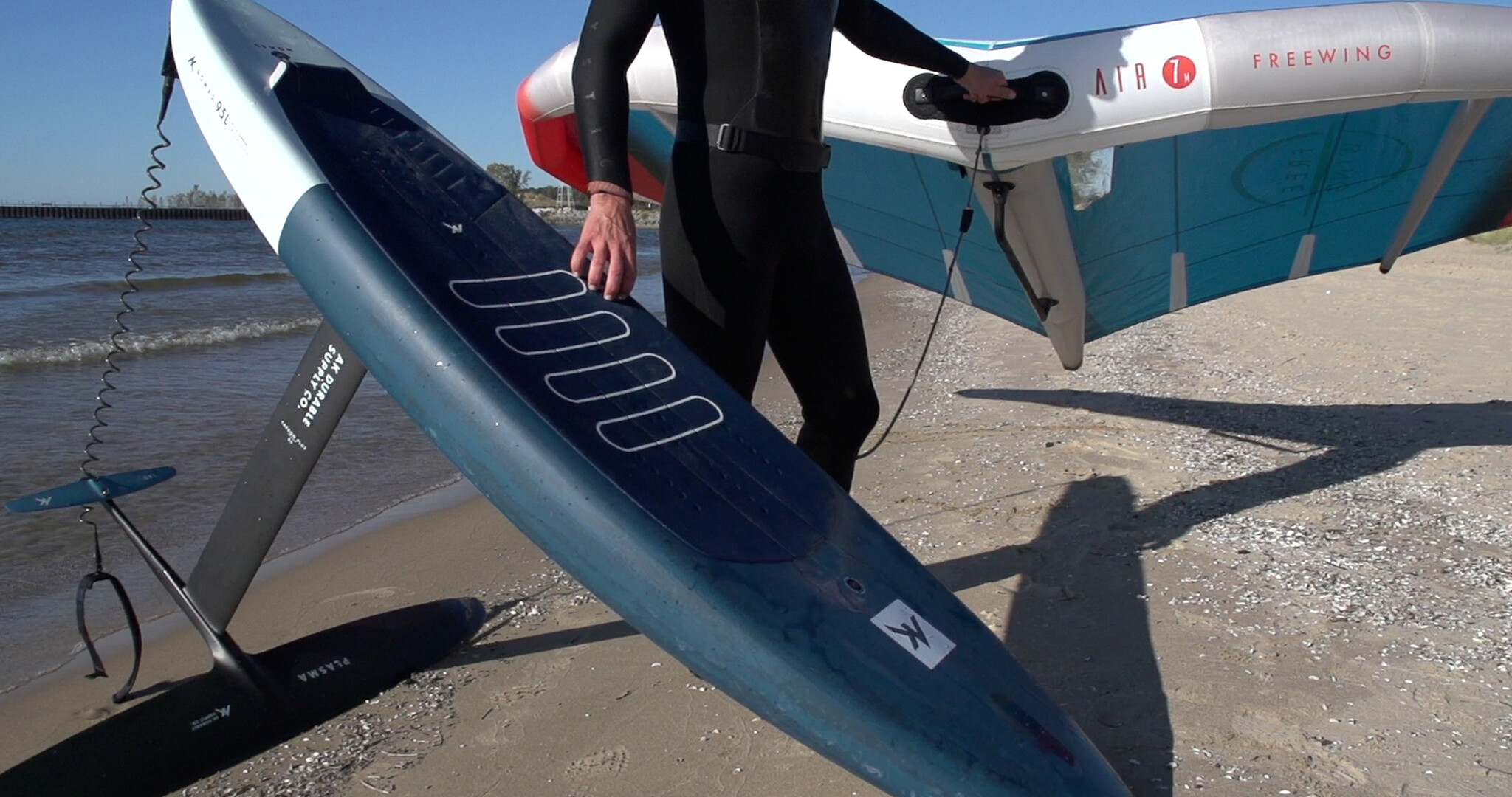
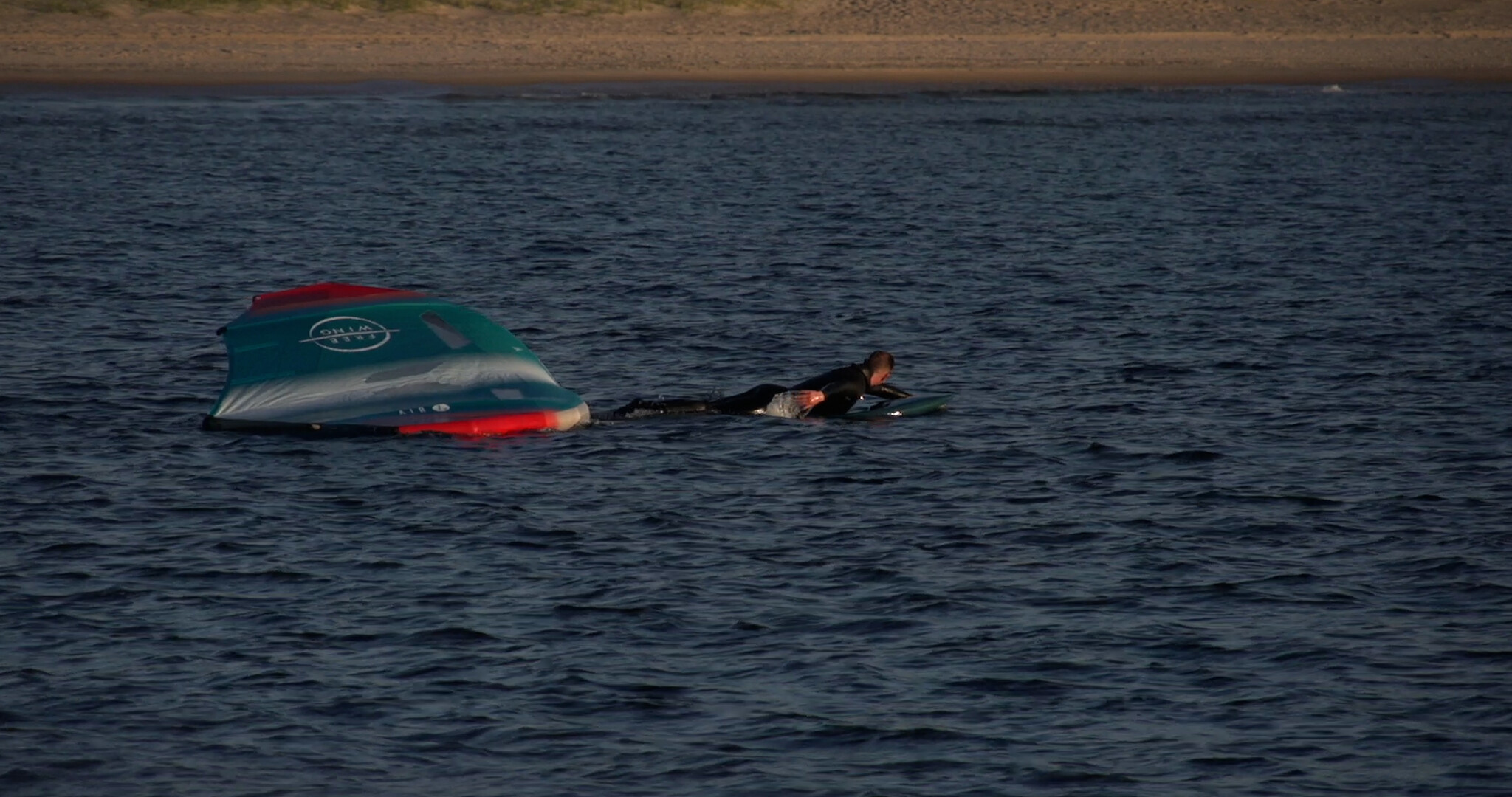
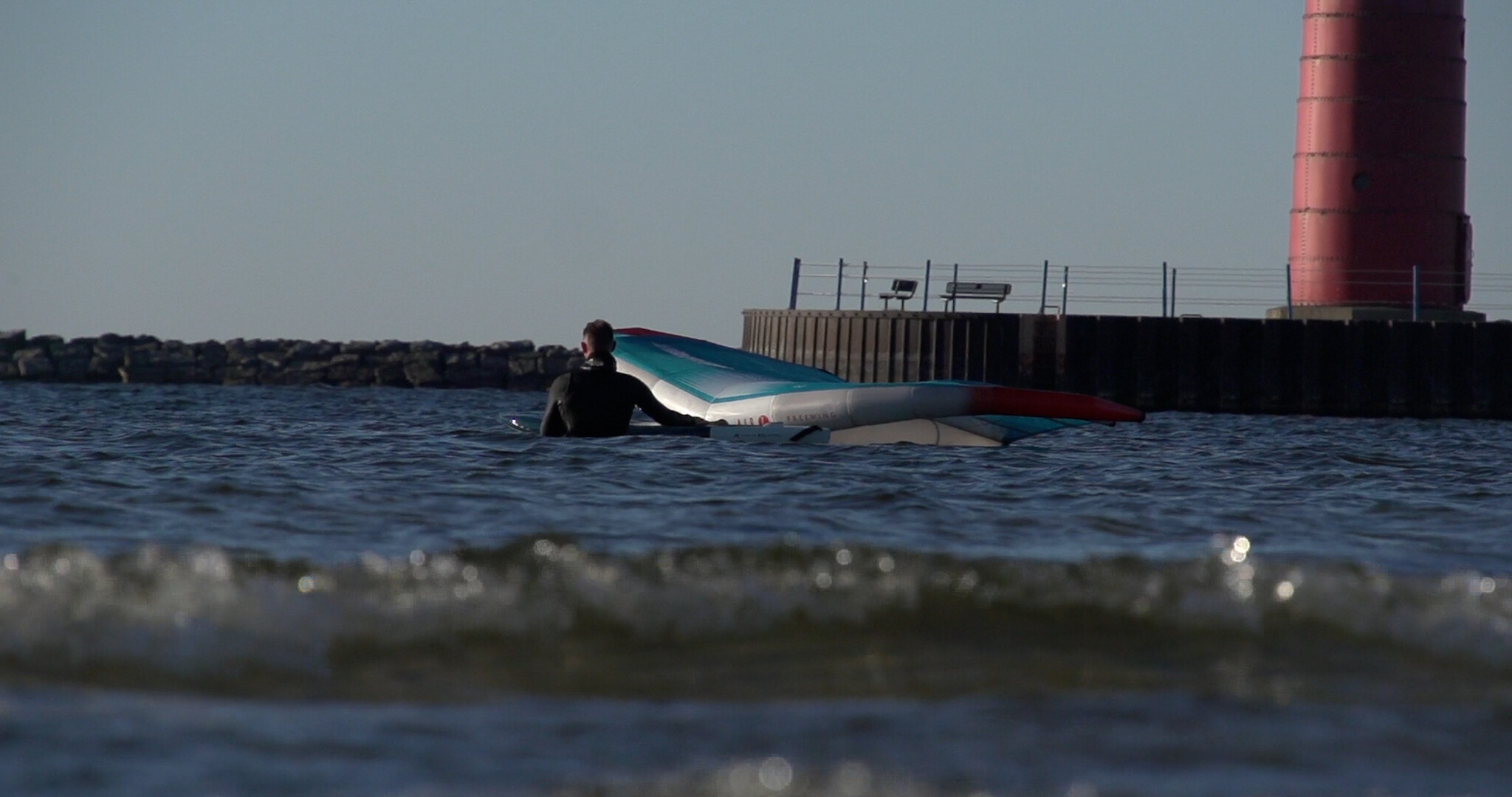
Hi Ingo!
Thanks for the question. Yes, I think you are correct. To fully unlock the benefits of the downwind shape boards (like a Nomad), they need to plane easily. Part of that is their longer length and narrower width. But, additionally, having a bit more volume keeps the board from bogging down, sticking, slogging... The Phazer, more of a hybrid mid-length, is very forgiving and can be ridden at or with a slightly smaller volume than you are used to, although it typically will have a bit more length than a similar all-around type wingboard. Please reach out to the shop if you have further questions! Thanks
I'm trying to decide which board to buy between phazer and nomad. Specifically are the volumes comparable?
From what I'm hearing a 76L volume is comparable to a 95 L Nomad. Or am I incorrect.